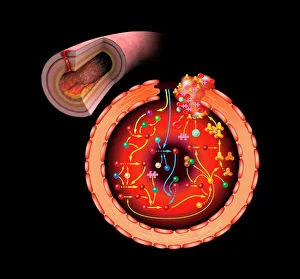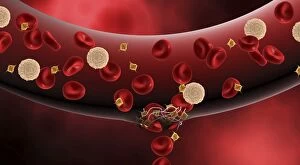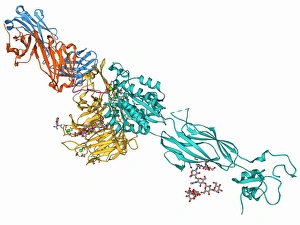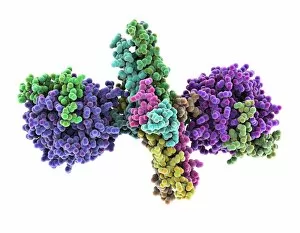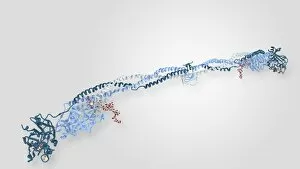Fibrinogen Collection
Fibrinogen: A Pivotal Player in Blood Coagulation Cascade At the heart of the intricate blood coagulation process lies the protein fibrinogen
All Professionally Made to Order for Quick Shipping
Fibrinogen: A Pivotal Player in Blood Coagulation Cascade At the heart of the intricate blood coagulation process lies the protein fibrinogen. This glycoprotein, represented by the C014 / 0473 and C014 / 0472 images, circulates in the bloodstream as an inactive precursor. When injury occurs, fibrinogen interacts with platelets and white blood cells at the site of damage, initiating a cascade of events. The integrin and fibrinogen complex (F006 / 9649) plays a crucial role in this process, allowing fibrinogen to bind to the platelet surface. Thrombin, a key enzyme in coagulation, then complexes with fibrinogen (F006 / 9561, C015 / 7148, and C015 / 7149), catalyzing its conversion into fibrin monomers. These monomers polymerize into long, insoluble fibrin strands (artwork), forming a mesh that helps to plug the wound and prevent further blood loss. In summary, fibrinogen is an essential component of the blood coagulation system, transforming from an inactive precursor to an active participant in the formation of a stable clot. Its intricate interactions with platelets, white blood cells, and thrombin ultimately contribute to the body's ability to effectively stop bleeding and promote healing.

